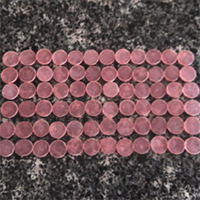The Analysis of the Differences between the Influence of Herbal Mouthwashes and the Chlorhexidine Mouthwash on the Physical Characteristics of Orthodontic Acrylic Resin

Submitted: March 6, 2020
Accepted: April 28, 2020
Published: August 4, 2020
Accepted: April 28, 2020
Abstract Views: 1063
PDF: 575
Publisher's note
All claims expressed in this article are solely those of the authors and do not necessarily represent those of their affiliated organizations, or those of the publisher, the editors and the reviewers. Any product that may be evaluated in this article or claim that may be made by its manufacturer is not guaranteed or endorsed by the publisher.
All claims expressed in this article are solely those of the authors and do not necessarily represent those of their affiliated organizations, or those of the publisher, the editors and the reviewers. Any product that may be evaluated in this article or claim that may be made by its manufacturer is not guaranteed or endorsed by the publisher.

 https://doi.org/10.4081/jbr.2020.8949
https://doi.org/10.4081/jbr.2020.8949



